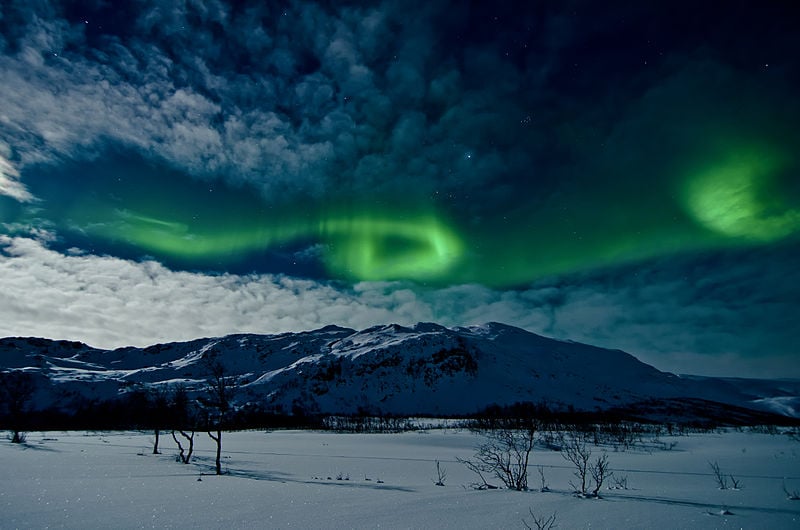The Most Difficult Aspects of Learning Norwegian
Norwegian is said to be one of the easiest languages for native English speakers to learn, which goes completely against the title of this article. But even the easiest things come with some level of difficulty. We are not above the challenge of finding out what the most difficult things about learning Norwegian are.
Here are the few hurdles to learning Norwegian as suggested by students already learning the language.
 Reap the benefits of your Norwegian studies abroad // Picture by Vincent van Zeijst via Wikimedia
Reap the benefits of your Norwegian studies abroad // Picture by Vincent van Zeijst via Wikimedia
The Pronunciation Of The Letter R Is Never Quite Right
You can spot a non-native Norwegian speaker by simply having them say words including the letter r. Norwegian words make extensive use of the rolling r sound, and to trill or not to trill is an internal debate for many a student.
Some Norwegian Letters Lead Double Lives
In addition to r which is everyone’s favourite bugbear, there is g which is either pronounced like go or yes; the h, which can be hard or silent depending on its neighbour; and k, that can be pronounced like key in English or ich (German) if it is in the right company.
There Are A Lot Of Other Pronunciation Exceptions
Sometimes groups of letters are pronounced differently depending on whether they are in the middle of a word or at the end. Typical examples of this are ig, which becomes giddy; ld, which turns to all; and rs which is pronounced sh when ending words.
Meaning Depends On The Tone
So depending on how you say a word you could be saying something entirely different to what you actually meant. There are two tone structures in Norwegian. Være means ‘to be’ and uses tone structure one, which sounds like up, down, up. Været, meaning ‘weather’, uses tone structure two, which emphasises the sound going from low to high.
There Are So Many Different Dialects
The most typical dialect adopted when learning to speak Norwegian is Standard Østnorsk. This is most often used in and around Oslo and surrounding areas. Standard Østnorsk is said to be closer to Danish than the other dialects, and you will find that if you visit other parts of the country the dialect will change –from varying pronunciation to an entire array of new vocabulary.
Norwegian Has Two Written Forms
Generally speaking, when you learn Norwegian the written form you will use is Bokmål. This is considered to be the standard written form of Standard Østnorsk as mentioned above. Nynorsk, the second type of written Norwegian, is often found to the west of Norway, particularly in the counties of Rogaland, Hordaland, Sogn og Fjordane and Møre og Romsdal.
 The Northern lights are reason alone to learn Norwegian // Picture by Andi Gentsch via Flickr
The Northern lights are reason alone to learn Norwegian // Picture by Andi Gentsch via Flickr
False Friends Masquerading as Cognates
There are a lot of cognates in Norwegian that look and sound exactly the same as they do in English. This is usually a huge comfort to new learners of a language. But do not rely on them too heavily. It turns out that there are a lot of false friends out there, looking very familiar but leading you astray. Our favourite examples are and – duck, disk – counter, gift – which can either mean married or poison, depending on how you use it, and hell – good luck.
There Is No One To Practice With
Okay, yes, we’re clutching at straws a little now. There’s really not that much considered especially difficult about Norwegian. But, given how excellent Norwegians are at English, even your best, most polished Norwegian is likely to be replied to in English. Which can be disheartening.
The Amount Of Untranslatable Words
We do love a good untranslatable but Norwegian has more than its fair share, and that can be a minefield when trying to learn. Koselig is a particularly tricky one, meaning ‘nice’, ‘cosy’, or ‘having a nice/cosy time with people’, depending on how you use it.
So there you have it. Some pitfalls to consider when you embark on learning the beautiful language that is Norwegian. But do not fear! These little obstacles are all part of the joy of learning a language, and where’s the challenge if everything is handed to you on a plate? Would you like a little help? Some good company and understanding reassurance along the way? How about you contact us and see what courses we have on offer to help you?


